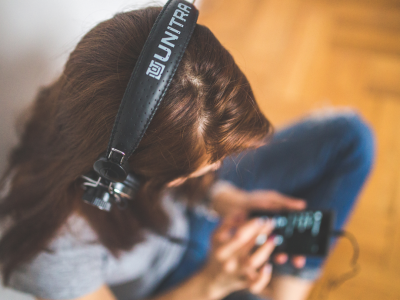Sleeping on your side is rarely the sole cause of shoulder pain, but it can be a contributing factor. Adjusting the way you sleep or the surface you sleep on can also help relieve any pain you are experiencing.
Let’s look at what causes shoulder pain and neck pain, and what you can do about it.
What Causes Sleep-Related Shoulder Pain
The most common cause of shoulder pain from sleeping is additional pressure from sleeping on your side. Shoulder pain from side sleeping is particularly common because the shoulder ends up bearing the weight for a significant amount of the torso for hours at a time. This can also lead to back pain and other issues.
In most other cases, shoulder pain from sleeping on your side is a symptom of another problem, such as a rotator cuff tear, shoulder bursitis or more minor injuries.
Understanding Your Shoulder Pain
If you’re experiencing side sleeper shoulder pain, the most important thing to do is pinpoint the root cause. Conditions like shoulder impingement, any rotator cuff injuries, tendonitis, or damage to the shoulder blade could all contribute to your pain. The shoulder joint is strong, but constant use can wear it down.
If adjusting your sleeping position doesn’t solve your pain, consult your doctor. Only a medical professional can determine the exact cause of ongoing shoulder pain.
How Do You Relieve Shoulder Pain Caused By Side Sleeping?
Here are our best solutions to shoulder pain from sleeping on your side.
1. Adjust Your Sleeping Position
When figuring out how to sleep on your side without hurting your shoulder, few things are more effective than changing your sleeping position. Here’s what you should keep in mind.
Figure Out The Best Sleep Position
The best sleeping positions are usually a neutral position, which spread your body weight evenly and support all areas equally. Back sleepers are often more comfortable than stomach sleepers, but this can vary for many other reasons, including your sleep surface.
Make Sure Your Bed Supports Your New Position
Not all mattresses are created equal, and most brands don’t make mattresses for specific sleeping position. If you’re a side sleeper and you have an ultra-firm mattress, chances are that you’re not very comfortable at night.
Use Supports As Needed
Many people struggle to stay in a different position at night. For maximum pain relief, you can place pillows or other items in your bed to help you stay in a specific position.
2. Incorporate Some Stretches Into Your Night-Time Routine
Adding stretches into your night-time routine is a great way to promote blood flow and get ready for bed. Here are some options.
Bear Hug
The bear hug is especially useful because it stretches both of your shoulders equally. Keeping this area loose and limber is key to reducing pain.
To do this stretch, stand straight up with your arms spread wide. Cross your arms so that your right hand grabs onto your left shoulder, and your left hand grabs onto your right shoulder. Use your hands to draw your shoulders toward your chest, like you’re giving yourself a hug.
Neck Rolls
The neck isn’t far from the shoulder, and what happens in one can easily affect the other. This is particularly true of tense and tight muscles.
To do this stretch, tuck your neck into your chest and gently roll your head in a semi-circle side to side. It should release tension in your neck and upper shoulders.
Kneeling Lat Stretch
The kneeling lat stretch helps further loosen the muscles in your back and shoulders. This is especially useful before bed and can make sleeping on your back far more comfortable.
To do this start on your knees about hip-width apart. Slowly lean forward to place your hands on the edge of your mattress. Keeping your back straight and head down, slowly lean back onto your hips, stretching your upper back.
Child’s Pose Stretch
The child’s pose stretch is excellent for reducing stress. Holding it for several minutes gives most of your body time to cool down and focus on other things.
To do the child’s pose, kneel on the floor and sit back onto your heels. Hold that pose while stretching your hands out on the floor in front of you.
4. Use A Pillow For Relief
Side sleepers can use a pillow for extra relief at night. Cushioning your upper arm can help reduce shoulder problems and keep your back in alignment throughout the night. Some pillows we recommend are the adjustable pillow, wedge pillow and ultra-cool pillow.
5. Think About A New Mattress
If your shoulder pain is especially bad, you may need a new mattress before you can say good night to your pain. This will be the cleanest transition if you choose a mattress that is built for your sleep position.
Helix Sleep mattresses are made specifically for certain body types, sleep positions and other factors. If you’re interested in learning more, think about taking our sleep quiz to see what mattress might be a great fit for you.
6. Medical Intervention
If changing your sleeping position and your mattress isn’t enough, you may need to get medical intervention. This is particularly true for rotator cuff injuries. Depending on your needs, your doctor may create a treatment plan involving physical therapy, x-ray scans, ice, or simply anti-inflammatory or pain-relief pills like ibuprofen.
Chronic pain in soft tissue areas is usually treatable, but only a doctor can decide the best plan for your particular situation. Do not attempt to self-medicate without professional guidance; you could have several issues, and treating just one of them may not solve your pain.
What To Do If You Have To Sleep on Your Side
If you have to sleep on your side to get a good night’s sleep, here are some things you can do to ease your sore shoulder.
Change Sides
If possible, try to sleep on your opposite side. For example, many people have shoulder pain on their right side, so switching to the left side can ease most of your pain.
Personalize Your Mattress
As we mentioned before, side sleepers benefit from using a mattress that is built specifically for them. Take the Helix Sleep quiz to find a mattress that works for your situation.
Note: The contents of this post are for informational purposes only. This content is not meant to be a substitute for professional medical advice or treatment. Do not disregard the advice of your doctor or other medical professionals because of what you’ve read on the Dream Journal blog.















